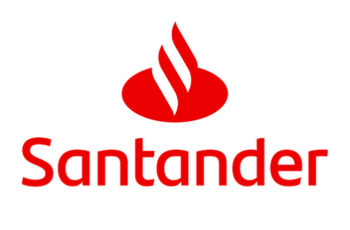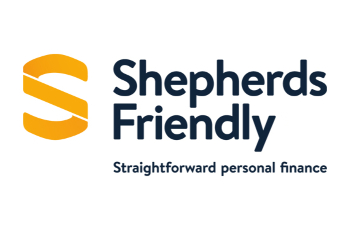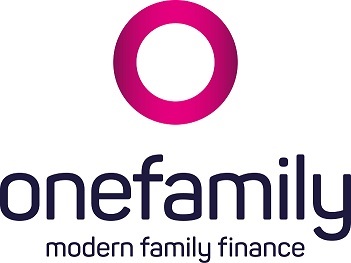This comparison simply includes all savings accounts.
Children's savings bonds
Disclaimer: Stocks and Shares Junior ISAs offer the potential for higher returns than Cash Junior ISAs, particularly if you choose to invest for the long-term. However, you do need to know that, as the underlying value of your child’s investment is linked to the fluctuations of the stock market; although the value cannot fall there is no guarantee that bonuses will be added each year.
Includes a Unitised With-Profits fund that comes with a guaranteed minimum payout when the child turns 18, provided no switches or withdrawals are made. Welcome Gift: After you start investing Scottish Friendly will pay £50 into the Junior ISA for your child
Disclaimer: The value of your investments can fall as well as rise, so your child could get back less than you paid in.
Disclaimer: Stocks and Shares Junior ISAs offer the potential for higher returns than Cash Junior ISAs, particularly if you choose to invest for the long-term. However, you do need to know that, as the underlying value of your child’s investment is linked to the fluctuations of the stock market; although the value cannot fall there is no guarantee that bonuses will be added each year.
Guide to Children's Savings Bonds in the UK
What are Children's Savings Bonds?
Children's savings bonds are fixed-term investments designed to accumulate funds for a child over a specified period. These bonds typically have a fixed interest rate, which means the returns on investment are guaranteed for the duration of the bond. They are offered by various banks and financial institutions across the UK.
Unlike standard savings accounts, children's savings bonds come with a lock-in period during which the money cannot be withdrawn without penalties. This feature ensures that the funds remain intact for the child's future needs and reduces the temptation to use the money for other purposes.
Benefits of Children's Savings Bonds
Investing in children's savings bonds offers several advantages for both the child and the guardian:
- Higher Interest Rates: Children's savings bonds often provide more attractive interest rates compared to regular savings accounts, allowing the investment to grow more quickly.
- Financial Security for the Child: By setting aside funds in a savings bond, parents or guardians can provide a financial safety net for the child's future, ensuring they have resources available for important life events.
- Disciplined Savings: The lock-in period of children's savings bonds promotes disciplined saving habits and prevents impulsive withdrawals.
- Guaranteed Returns: With fixed interest rates, investors know exactly how much the bond will be worth at maturity, providing a sense of security and predictability.
- Tax-Efficient Options: Depending on the type of bond and individual circumstances, certain children's savings bonds may offer tax advantages.
Eligibility and Age Limits
Children's savings bonds are typically available for children of all ages, from newborns to teenagers. Most financial institutions set a minimum age requirement for the child, which can vary from one provider to another. Additionally, parents or legal guardians often need to open the bond on behalf of the child, as minors cannot enter into financial contracts independently.
The bond's terms and conditions may outline specific eligibility criteria, so it is essential to review them carefully before proceeding with the investment.
Types of Children's Savings Bonds
In the UK, there are two primary types of children's savings bonds available, each with its own unique features and benefits.
1. Fixed-Rate Children's Savings Bonds
Fixed-rate children's savings bonds offer a stable and predictable return on investment. Features and Benefits:
- Fixed Interest Rate: These bonds come with a predetermined interest rate that remains constant throughout the bond's term. This means the returns are not affected by changes in the market interest rates.
- Predictable Returns: With a fixed rate, investors can accurately calculate the final amount the bond will yield at maturity, providing peace of mind and financial planning stability.
- Low Risk: Fixed-rate bonds are generally considered low-risk investments since the interest rate remains unaffected by market fluctuations.
- Duration and Lock-in Period:
- Bond Duration: Fixed-rate children's savings bonds typically have terms that range from one to five years, although some may offer longer durations.
- Lock-in Period: During the bond's term, the invested amount is inaccessible, ensuring that the funds are reserved for the child's future needs.
- Interest Rates and Compounding:
- Interest Payment Frequency: Interest may be paid at regular intervals (e.g., annually or semi-annually) or at the bond's maturity.
- Compounding: Some bonds offer compounding interest, where the earned interest is reinvested into the bond, leading to additional growth over time.
2. Indexed Children's Savings Bonds
Indexed children's savings bonds, also known as inflation-linked bonds, offer a return based on the performance of an underlying index, often linked to inflation rates.
How They Work:
- Tied to an Index: Indexed bonds' returns are directly tied to the performance of an index, such as the Consumer Price Index (CPI), which measures inflation.
- Protection against Inflation: These bonds aim to protect the investment against inflationary pressures, ensuring that the real value of the money remains stable or grows.
- Understanding Indexation and Risk:
- Indexation: Indexation is the method used to adjust the bond's value in response to changes in the index it is linked to. This adjustment ensures that the bond's returns keep pace with inflation.
- Risk Considerations: While indexed bonds offer inflation protection, they may not provide the same level of predictability as fixed-rate bonds, as the returns are dependent on external economic factors.
- Pros and Cons:
- Advantages: Indexed children's savings bonds can offer a hedge against inflation and help maintain the purchasing power of the investment.
- Disadvantages: The returns on indexed bonds can be less predictable than those of fixed-rate bonds, and investors may not benefit fully from periods of deflation.
How to Invest in Children's Savings Bonds
Investing in children's savings bonds requires careful consideration and understanding of the available options.
Banks and Financial Institutions Offering Children's Savings Bonds
When looking to invest in children's savings bonds, it is essential to research and compare the offerings of various banks and financial institutions. Consider the following points:
- Comparison of Available Options:
- Look for banks and institutions that offer children's savings bonds in line with your investment goals and risk tolerance.
- Compare interest rates, terms, and lock-in periods to identify the most suitable options.
- Minimum Investment Requirements:
- Check the minimum investment amount required to open a children's savings bond account with different providers.
- Consider whether the required minimum is feasible for your budget.
- Application Process:
- Understand the application process, documentation needed, and any specific requirements for opening the bond account on behalf of the child.
- Ensure you have all the necessary paperwork ready to expedite the process.
2. Choosing the Right Children's Savings Bond
Selecting the appropriate children's savings bond is a crucial decision that impacts the investment's success. Consider the following factors:
- Assessing Risk Tolerance:
- Evaluate your risk tolerance level and consider whether you prefer a more conservative fixed-rate bond or are open to the potential benefits and risks of indexed bonds.
- Keep in mind that indexed bonds may be better suited for those seeking protection against inflation.
- Understanding Return on Investment (ROI):
- Calculate the potential return on investment for different bond options, factoring in the interest rates, duration, and compounding effects.
- Identify which bond aligns better with your financial objectives.
- Reading the Terms and Conditions:
- Thoroughly review the terms and conditions of the chosen children's savings bond.
- Pay attention to details such as early withdrawal penalties, interest payment frequency, and other relevant clauses.
Tax Implications and Considerations
1. Tax Treatment of Children's Savings Bonds
Children's savings bonds can have varying tax treatments depending on their specific type and whether they fall under tax-efficient schemes. Consider the following points:
- Tax-Free vs. Taxable Bonds:
- Some children's savings bonds may offer tax-free interest earnings, meaning the returns are not subject to income tax.
- Other bonds may be taxable, and any interest earned is added to the investor's taxable income.
- Impact on Child's Tax Allowance:
- If the bond generates taxable income for the child, it is essential to consider how this affects the child's annual tax allowance.
- Understanding the tax implications can help optimise the investment for tax efficiency.
- Tax Reporting and Compliance:
- Investors should be aware of their responsibilities regarding tax reporting and compliance related to the children's savings bond investment.
- Ensure accurate and timely reporting to remain compliant with tax regulations.
2. Tax-Efficient Alternatives
Aside from children's savings bonds, there are other tax-efficient options available to invest on behalf of a child's future. Explore the following alternatives:
- Junior ISAs (Individual Savings Accounts):
- Junior ISAs are tax-free savings accounts designed specifically for children. They come in two types: cash Junior ISAs and stocks and shares Junior ISAs.
- Contributions to Junior ISAs are subject to annual limits set by the government.
- Child Trust Funds (CTFs):
- Child Trust Funds were a government initiative to provide a long-term savings and investment account for children born between September 1, 2002, and January 2, 2011.
- CTFs came with government contributions and were tax-free.
- ISA Transfers:
- Depending on the child's financial situation and investment goals, it may be possible to transfer funds from a children's savings bond to a Junior ISA to take advantage of tax-free benefits.
Managing and Redeeming Children's Savings Bonds
Effectively managing children's savings bonds is essential to ensure the investment remains on track and meets the intended financial goals.
1. Monitoring the Bond's Performance
Regularly monitoring the performance of children's savings bonds is essential to stay informed about the investment's progress and make any necessary adjustments. Consider the following:
- Keeping Track of Interest Accrual:
- Stay updated on the interest earned by the bond, especially if it is a fixed-rate bond with periodic interest payments.
- Monitor the growth of the investment over time.
- Staying Informed about Market Conditions:
- For indexed bonds, be aware of changes in the linked index, as this affects the potential returns.
- Stay informed about economic trends that may impact the bond's performance.
- Bond Maturity and Options:
- Be aware of the bond's maturity date, and plan ahead for the funds' intended use.
- Consider reinvesting the proceeds into another suitable financial product or withdrawing the funds as needed.
2. Early Redemption and Penalties
While children's savings bonds typically have a fixed term, there may be circumstances where early redemption is necessary. However, early withdrawal may come with penalties or reduced interest. Consider the following:
- Understanding Redemption Terms:
- Review the bond's terms and conditions to understand the rules for early redemption.
- Some bonds may allow partial redemption, while others may not permit any withdrawals until maturity.
- Penalty Charges and Exceptions:
- Take note of any penalty charges that apply to early redemption.
- Some bonds may have exceptions, such as allowing penalty-free withdrawals under certain circumstances, like emergencies.
- Reinvesting or Withdrawing Funds:
- Decide whether reinvesting the funds in another financial product or withdrawing the money for the child's needs is the best course of action.
Tips for Maximising Returns
1. Regular Contributions and Compound Interest
Encourage regular contributions to the children's savings bonds to accelerate their growth over time. Here's how it can be beneficial:
- Setting Up Automatic Deposits:
- Arrange automatic transfers from a designated bank account to the bond's savings account at regular intervals, such as monthly or annually.
- Regular contributions help build the investment steadily.
- Leveraging Compound Interest:
- For bonds with compounding interest, allow the interest to accumulate and reinvest into the bond regularly.
- Compound interest helps the investment grow faster over time, especially with longer-term bonds.
- Example of Compound Interest Growth:
- Let's consider an initial investment of £1,000 in a fixed-rate bond with an annual interest rate of 4%.
- After one year, the investment would grow to £1,040 with simple interest.
- However, with compounding interest, the investment would grow to £1,040.80, with the extra 80p coming from the interest on the initial £40 interest earned.
2. Exploring Government-Backed Schemes
Investors should explore government-backed schemes and initiatives that provide additional incentives for saving on behalf of children. Consider the following options:
- Help to Save Scheme:
- The Help to Save Scheme is a government initiative that offers eligible individuals on low incomes the opportunity to earn a 50% bonus on their savings.
- Contributions can be made for up to four years, and the scheme provides a tax-free bonus at the end of the second and fourth years.
- Premium Bonds:
- Premium Bonds, offered by National Savings and Investments (NS&I), are a unique form of investment where the interest is replaced by a monthly prize draw.
- While not specifically designed for children, parents or guardians can hold Premium Bonds on behalf of a child.
3. Diversification of Investment
Consider diversifying the child's investment portfolio beyond children's savings bonds. Diversification spreads risk and may provide the potential for higher returns. Here's how to approach it:
- Exploring Other Investment Options:
- Research and consider other long-term investment options, such as stocks, mutual funds, or exchange-traded funds (ETFs).
- Each investment type carries its own risk and return potential, so diversifying across multiple assets can provide balance.
- Seeking Professional Advice:
- If unsure about investment decisions or how to diversify, seek advice from a qualified financial advisor.
- A financial expert can offer personalised recommendations based on the child's specific financial goals and risk tolerance.
By adopting these tips, investors can optimise the growth of children's savings bonds and create a robust financial plan to secure the child's future.
Risks Associated with Children's Savings Bonds
While children's savings bonds offer several benefits, it's essential to be aware of the potential risks involved in these investments. Understanding and mitigating these risks can help safeguard the child's financial future.
1. Interest Rate Risk
Interest rate risk is a significant consideration, particularly for fixed-rate children's savings bonds. Here's what to know about this risk:
- Impact of Changing Interest Rates:
- Fixed-rate bonds are vulnerable to changes in the broader interest rate environment.
- If market interest rates rise significantly during the bond's term, the fixed interest rate on the bond may become less attractive compared to current rates.
- Lock-In Periods and Missed Opportunities:
- Long lock-in periods can prevent investors from capitalising on higher interest rates available in the market.
- In a rising interest rate environment, investors may miss out on more favourable returns.
- Mitigating Interest Rate Risk:
- Investors can consider diversifying their portfolio with a mix of fixed-rate and variable-rate investments to spread the risk.
2. Inflation Risk
Indexed children's savings bonds aim to address inflation risk, but it's crucial to understand this risk and its implications:
- Effect on Real Returns:
- Inflation can erode the purchasing power of the bond's returns over time.
- If the rate of inflation exceeds the indexed bond's rate of return, the real value of the investment may decrease.
- Considering the Indexed Bond's Performance:
- While indexed bonds aim to protect against inflation, they may not outperform fixed-rate bonds during periods of lower inflation.
- Mitigating Inflation Risk:
- Diversifying the investment portfolio to include assets that tend to perform well during inflationary periods can help mitigate this risk.
3. Default Risk
Default risk is the risk that the issuer of the children's savings bond may fail to meet its payment obligations. Consider the following:
- Evaluating the Issuer's Creditworthiness:
- Research the financial stability and credit rating of the institution offering the bond.
- Choose bonds from reputable and financially sound institutions.
- Government-Backed Bonds vs. Private Institutions:
- Government-backed bonds typically carry lower default risk compared to bonds issued by private institutions.
- Mitigating Default Risk:
- Diversifying investments across different institutions and government-backed schemes can help mitigate default risk.
Here are five commonly asked FAQs related to children's savings bonds in the UK:
What is the minimum age requirement for opening a children's savings bond?
The minimum age requirement for opening a children's savings bond may vary among different financial institutions. Generally, these bonds are available for children of all ages, from newborns to teenagers. However, parents or legal guardians typically need to open the bond on behalf of the child, as minors cannot enter into financial contracts independently.
Are children's savings bonds tax-free?
Not all children's savings bonds are tax-free. Some bonds offer tax-free interest earnings, meaning the returns are not subject to income tax. However, others may be taxable, and any interest earned is added to the investor's taxable income. It's essential to check the specific terms and tax treatment of each bond to understand its tax implications.
Can I withdraw money from a children's savings bond before its maturity date?
Children's savings bonds usually come with a lock-in period during which the invested amount cannot be withdrawn without penalties. Early withdrawal may lead to reduced interest or penalty charges, depending on the bond's terms and conditions. It's important to be aware of the potential consequences of early redemption before making an investment.
Are indexed children's savings bonds better than fixed-rate bonds?
The choice between indexed and fixed-rate children's savings bonds depends on individual preferences and financial goals. Indexed bonds provide protection against inflation and can offer a hedge in an inflationary environment. On the other hand, fixed-rate bonds offer stable and predictable returns, which can be advantageous during times of fluctuating interest rates. Evaluating one's risk tolerance and financial objectives can help in selecting the most suitable type of bond.
What is the best way to diversify investments for my child's future?
Diversification involves spreading investments across different asset classes to reduce risk. While children's savings bonds can be a safe option, it's beneficial to explore other investment avenues. Consider options like Junior ISAs, Child Trust Funds, stocks, mutual funds, or exchange-traded funds (ETFs). Diversifying the investment portfolio can help optimise returns and provide a balanced approach to achieving financial goals.







